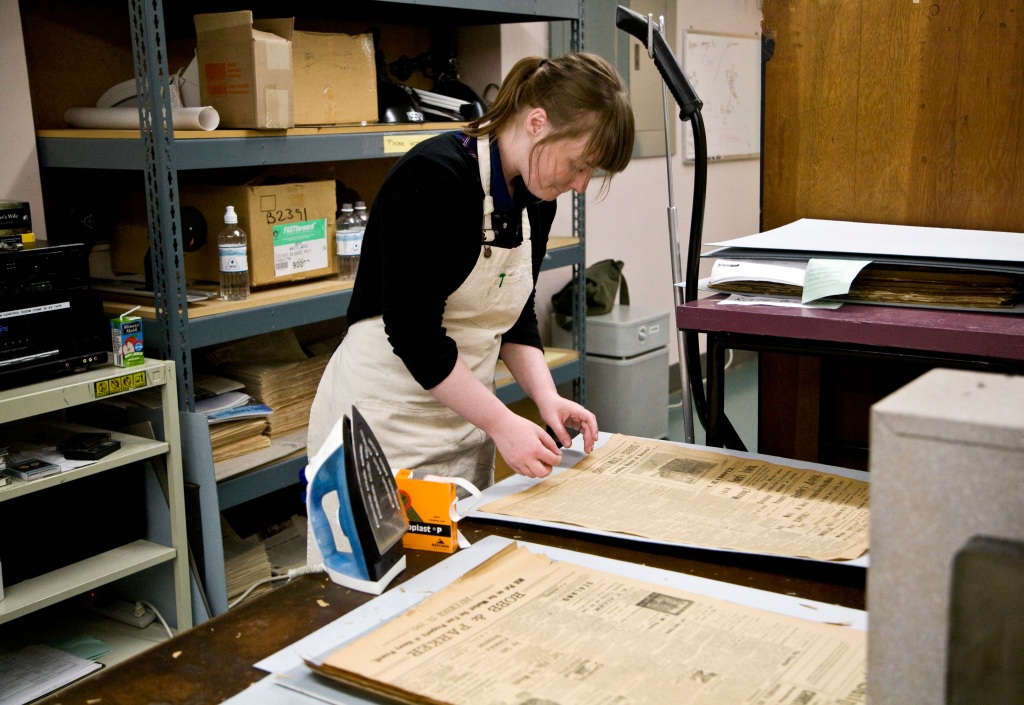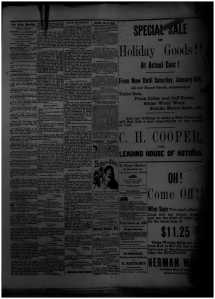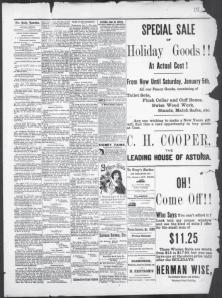Those who follow our project may recall Karen Estlund’s trip to Astoria last February. In a previous Blog post, it was reported that she had returned to Eugene with a carload of historic Astorian newspapers on loan from the Astoria Public Library. Has anyone wondered what became of those issues?
While we have used existing microfilm as a source for most of our page scans, the Astorian was identified early on as a title that could use a good upgrade in filming. The existing microfilm had mostly been photographed half a century ago, from bound volumes of issues that were often in an exceedingly poor state of preservation. All of this was less than ideal. So, when it became apparent that we would have the budget to fund refilming of one title, the Astorian was an easy choice.
Now that this work has been completed, let’s take a moment to review the process of microfilming an historical newspaper–the work of our colleagues in the Image Services Department of Knight Library.

The first step in the microfilming process is to guillotine any issues that have been bound between covers. This is because pages that are filmed while still bound tend to produce gutter shadows, areas of uneven contrast and exposure, and other flaws. A far superior filmed image is obtained from a page that can be laid perfectly flat. Next comes a review of collation to make sure that issues and the pages within issues have been placed in the correct, chronological order. As page numbers were not originally printed on the Astorians, the numbers were hand-written in light pencil, in order to facilitate both filming and later page-searching by library patrons. At this stage, any wrinkles in the pages were also flattened using a steam iron, and rips and tears were mended with Filmoplast, a non-reflective adhesive tape specifically designed for archival paper documents.

Once the Astorians were fully prepped, they were then routed to the camera room. Here they were filmed using our planetary microfilm camera. The pages are placed on a flat copyboard and exposed to 35mm film stock. A positive print is struck from each master negative film reel, in order to check the quality of the filming work. When a reel passes quality review, the master negative is then duplicated to produce a negative copy that can be handled by collators with ODNP and, eventually, passed on to our vendor for digital scanning. The original negative is the archival copy.
More or less, this was the process followed for all 11,960 pages of the Astorian that were re-filmed for our project. You can judge the results here:


Heidi Scheidl, the student employee who completed most of this work, reports that she very much enjoyed handling the old Astorians. “I had a chance to read a lot of the articles,” Heidi says. “It gave a really good taste of what the 19th century writing style was like.”
For those who would like to learn more about the processes and history of microfilm and other imaging technologies, here is a website full of information and fun retro photos! —Jason A. Stone
